News
Interview: ‘The First Purge’ Director Gerard McMurray
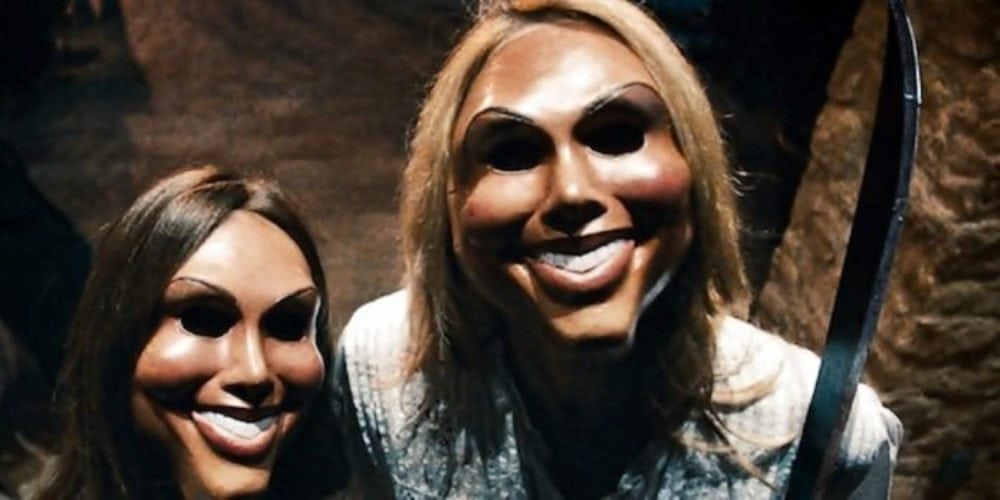
After directing the first three Purge films, James DeMonaco selected Gerard McMurray to direct The First Purge. “After writing and directing three Purge films in five years, I was ready to hand over the directing duties,” says DeMonaco. “Gerard saw the Purge films as I see them—as genre films but also as sociopolitical commentaries about race, and class, and gun control in our country.”
In this interview, Gerard McMurray talks about the making of the making of The First Purge and the unique influences he brought to the film, which details the evolution of Purge Night. The First Purge opens in theaters on July 4.
DG: Gerard, what attracted you to this project?
GM: What attracted me to this particular Purge film was James DeMonaco’s script. It was terrific and took place inside of an urban neighborhood. The story felt very personal to me; it felt like home. I instantly identified with the main characters, and I had a vision immediately. Also, The First Purge has a spirit of resistance that I identify with. My father taught me from an early age to stand up for myself, to fight for what is right, and to protect my community. So, I saw a lot of my own ideals in the main character. The storyline is layered, and I relished the opportunity to make some great political commentary on the present state of our country through a story whose society closely mirrors our own. This is a huge opportunity to do something unique, fresh, and contemporary.
DG: After James DeMonaco directed the first three Purge films, what do you think you brought to this fourth film that’s unique from other directors who might have made this film, including James?
GM: I think I bring a very different cultural tone to the film. This story takes place on Staten Island and follows the journey of a group of Black and Brown people seeking to survive the First Purge night. I grew up in the 7th ward of New Orleans, which is a predominantly Black neighborhood. The characters in this Purge and their journey mirror some experiences that I have had in my lifetime. I feel like my life experience, as a Black man in America, gives me a unique perspective on telling an authentic story about what the Purge could look like inside of an inner-city neighborhood.

DG: Gerard, what was the visual strategy that you and your cinematographer discussed prior to the start of filming, and how would you describe the look and tone of the film?
GM: While defining the look and tone of the film with my cinematographer, I aimed to distinguish this film from the other Purge movies, since it is a prequel, not a sequel. Previous discussions with Blumhouse and Platinum Dunes, made it clear to me that they liked the visual look of my first film, Burning Sands, and wanted to do something closer to it tonally, than they did in other Purge movies.
I explained my vision for this film as an homage to 1990s hood movies. I grew up as a teenager in the ’90s, so movies like Do the Right Thing, Boyz N the Hood, Menace II Society, New Jack City, King of New York, and other films from that era weighed heavily on my choices for shot selection and overall tone. I feel like the contrast between ’90’s-style and a modern horror/action adventure/political thriller make for an interesting interpretation of The First Purge and add a new flavor to the film. Aesthetically, it was important for to me to enhance the texture of the environments, and portray the various cultures represented in the movie with beauty and elegance.
I also wanted the movie to look big, so I chose to do a lot of wide and crane shots, capturing the community while making the action sequences and personal interactions much closer and intimate. I want the audience to feel the dramatic and emotional journeys of the characters, to feel fear with them, as well as love, to get a thrill of the desperation they experienced on Purge night. At moments, we let the camera flow and dance with the characters, to give the audience a feeling of reality and humanity with them showing that, ultimately, the Purge affects everyone—regardless of their skin color and economic status.
DG: How would you describe the mayhem and violence that takes place in this film, compared to the previous films, and what do you think audiences will find most compelling, frightening, about this film?
GM: The previous Purge films all have their own unique personality. I wanted my take on the Purge to stand out. I wanted to return to that intimacy that we saw in the first movie, while incorporating that feeling of being out in the neighborhood, to show all the gleeful mayhem taking place in the streets.
My goal was to keep the Purge violence feeling as real as possible so the type of mayhem and violence in my film echoes things that I fear, which I think makes this film have its own unique level of scariness and terror for audiences. I wanted my film to have a grit and a realness to it that makes people feel like “Wow, this could happen in real life.” The contrast between seeing these very relatable characters have to deal with the realities of Purge night adds a different dimension of scariness to this film.
DG: Other than being an origin film, a prequel, what do you think sets this film apart from the previous three films?
GM: This film is different because it is set during the first Purge night, so the characters don’t really know what to expect. In other Purge films, society has become used to the Purge, and a lot of people even enjoy it. But in this film, no one really knows what to do, so you get a different experience.
Also, this Purge doesn’t spend time in the suburbs, dealing with the experience of middle- and upper-class people. Here, we are in the inner-city, experiencing it through the eyes of the people. Seeing the film from the perspective of the streets and the fear and terror these citizens have gives this film a different feel. As Jay-Z says, “The streets is watching.”
DG: What did the Buffalo filming location bring to this film that’s unique from other locations you might have chosen, and how would you describe the setting of the film?
GM: The City of Buffalo was an amazing place to shoot and Mayor Byron Brown and the Buffalo film commission really showed us love. Having access to every resource the city had to offer was incredibly helpful. Also, I think Buffalo itself lent a certain spirit for this film. When I imagined this Purge, I knew that it had to feel like an American city. American cities have a certain texture that is hard to replicate. Also, considering the setting for the film is the inner-city, I knew that we had to have a certain aesthetic when it came to the people and the environment. Buffalo was a great place to shoot because it has a strong Black and Latino presence. I felt like I could make Buffalo feel like Staten Island—based on the texture of the streets, the stores— and that I could cast local actors that looked like the people I grew up with. Buffalo really offered an authenticity that I liked.
DG: How would you describe the human dynamic that exists in this film?
GM: The human dynamic of my Purge lives within its characters and their varied experiences. I tried to create empathetic characters experiencing the gambit of raw human emotions that the audience can relate to. I also wanted to explore the innate need for human beings to do violent things, to Purge, and to show people giving into this need to Purge and relishing in the freedom that it brings them. I think that we take a multi-faceted approach to showing humanity in this film, and the many different ways humanity can manifest itself on Purge night.
DG: What is the name of Marisa Tomei’s character in this film, and how would you describe her role in this film?
GM: Marisa Tomei’s character is named The Architect because she is the psychologist who came up with the whole idea of The Purge. She feels that Purging is part of humanity, and that if people could give into their desires once a year, it would help alleviate some of the crime and violence that are consuming the country on a daily basis. In that vein, she is simply a scientist testing out her hypothesis in a controlled scientific experiment with human volunteers.
However, her character is also there to show the human side of those in power, and to show a different perspective of someone working with the NFFA. I want to thank Marisa for her honest portrayal, and her immense contribution to our film.
DG: What was the biggest challenge you faced in making this film?
GM: I think the biggest challenge in making this film has come down to making it scary. This film has so many elements, but at its core it is still a horror film. I feel comfortable communicating human emotions to the audience by putting the characters into situations where they experience fear and terror, but those things don’t necessarily translate into a good scare that will get audiences jumping out of their seats. But having the creative input from James DeMonaco, who created the world of The Purge, and producer Sébastien Lemercier helped me to tease out the tension in those moments, which made them scary. I hope that audiences enjoy what we have put together for them.
Listen to the 'Eye On Horror Podcast'

Editorial
7 Great ‘Scream’ Fan Films & Shorts Worth a Watch
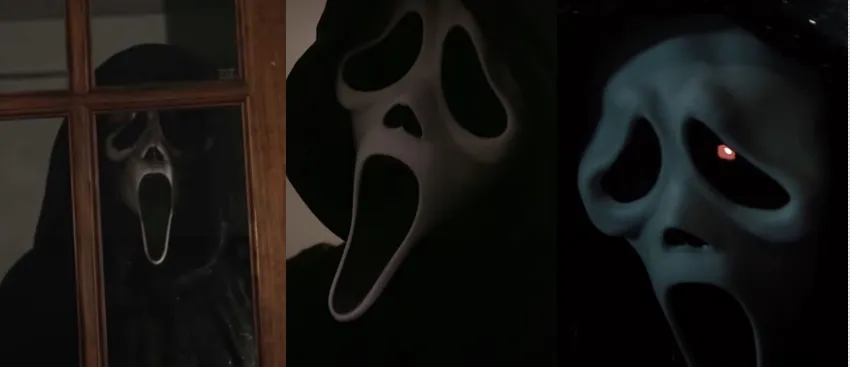
The Scream franchise is such an iconic series, that many budding filmmakers take inspiration from it and make their own sequels or, at least, build upon the original universe created by screenwriter Kevin Williamson. YouTube is the perfect medium to showcase these talents (and budgets) with fan-made homages with their own personal twists.
The great thing about Ghostface is that he can appear anywhere, in any town, he just needs the signature mask, knife, and unhinged motive. Thanks to Fair Use laws it’s possible to expand upon Wes Craven’s creation by simply getting a group of young adults together and killing them off one by one. Oh, and don’t forget the twist. You’ll notice that Roger Jackson’s famous Ghostface voice is uncanny valley, but you get the gist.
We have gathered five fan films/shorts related to Scream that we thought were pretty good. Although they can’t possibly match the beats of a $33 million blockbuster, they get by on what they have. But who needs money? If you’re talented and motivated anything is possible as proven by these filmmakers who are well on their way to the big leagues.
Take a look at the below films and let us know what you think. And while you’re at it, leave these young filmmakers a thumbs up, or leave them a comment to encourage them to create more films. Besides, where else are you going to see Ghostface vs. a Katana all set to a hip-hop soundtrack?
Scream Live (2023)
Ghostface (2021)
Ghost Face (2023)
Don’t Scream (2022)
Scream: A Fan Film (2023)
The Scream (2023)
A Scream Fan Film (2023)
Listen to the 'Eye On Horror Podcast'
Movies
Another Creepy Spider Movie Hits Shudder This Month
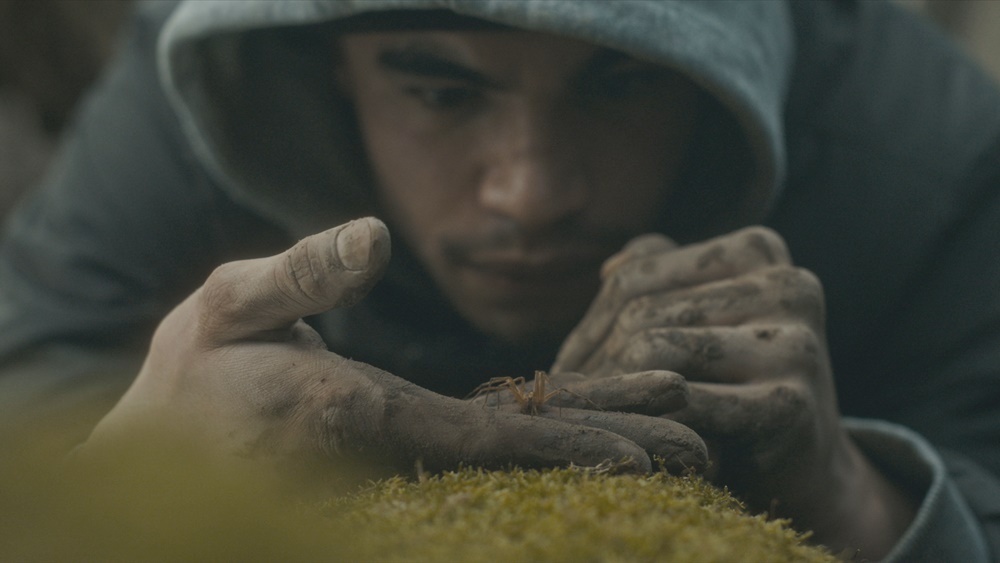
Good spider films are a theme this year. First, we had Sting and then there was Infested. The former is still in theaters and the latter is coming to Shudder starting April 26.
Infested has been getting some good reviews. People are saying that it’s not only a great creature feature but also a social commentary on racism in France.
According to IMDb: Writer/director Sébastien Vanicek was looking for ideas around the discrimination faced by black and Arab-looking people in France, and that led him to spiders, which are rarely welcome in homes; whenever they’re spotted, they’re swatted. As everyone in the story (people and spiders) is treated like vermin by society, the title came to him naturally.
Shudder has become the gold standard for streaming horror content. Since 2016, the service has been offering fans an expansive library of genre movies. in 2017, they began to stream exclusive content.
Since then Shudder has become a powerhouse in the film festival circuit, buying distribution rights to movies, or just producing some of their own. Just like Netflix, they give a film a short theatrical run before adding it to their library exclusively for subscribers.
Late Night With the Devil is a great example. It was released theatrically on March 22 and will begin streaming on the platform starting April 19.
While not getting the same buzz as Late Night, Infested is a festival favorite and many have said if you suffer from arachnophobia, you might want to take heed before watching it.
According to the synopsis, our main character, Kalib is turning 30 and dealing with some family issues. “He’s fighting with his sister over an inheritance and has cut ties with his best friend. Fascinated by exotic animals, he finds a venomous spider in a shop and brings it back to his apartment. It only takes a moment for the spider to escape and reproduce, turning the whole building into a dreadful web trap. The only option for Kaleb and his friends is to find a way out and survive.”
The film will be available to watch on Shudder starting April 26.
Listen to the 'Eye On Horror Podcast'
Movies
Part Concert, Part Horror Movie M. Night Shyamalan’s ‘Trap’ Trailer Released
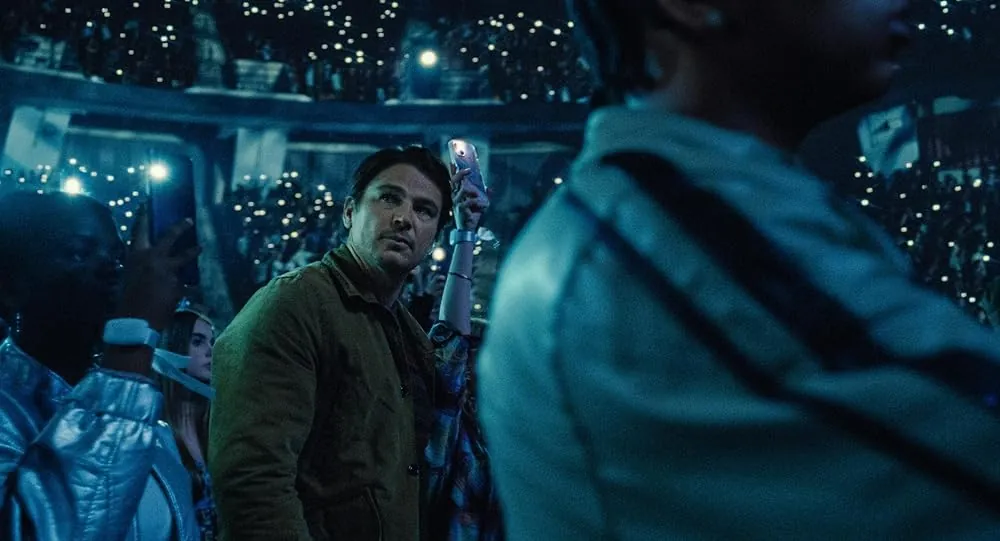
In true Shyamalan form, he sets his film Trap inside a social situation where we aren’t sure what is going on. Hopefully, there is a twist at the end. Furthermore, we hope it’s better than the one in his divisive 2021 movie Old.
The trailer seemingly gives away a lot, but, as in the past, you can’t rely on his trailers because they are often red herrings and you are being gaslit to think a certain way. For instance, his movie Knock at the Cabin was completely different than what the trailer implied and if you hadn’t read the book on which the film is based it was still like going in blind.
The plot for Trap is being dubbed an “experience” and we aren’t quite sure what that means. If we were to guess based on the trailer, it’s a concert movie wrapped around a horror mystery. There are original songs performed by Saleka, who plays Lady Raven, a kind of Taylor Swift/Lady Gaga hybrid. They have even set up a Lady Raven website to further the illusion.
Here is the fresh trailer:
According to the synopsis, a father takes his daughter to one of Lady Raven’s jam-packed concerts, “where they realize they’re at the center of a dark and sinister event.”
Written and directed by M. Night Shyamalan, Trap stars Josh Hartnett, Ariel Donoghue, Saleka Shyamalan, Hayley Mills and Allison Pill. The film is produced by Ashwin Rajan, Marc Bienstock and M. Night Shyamalan. The executive producer is Steven Schneider.
Listen to the 'Eye On Horror Podcast'
-

 News3 days ago
News3 days agoThis Horror Film Just Derailed a Record Held by ‘Train to Busan’
-
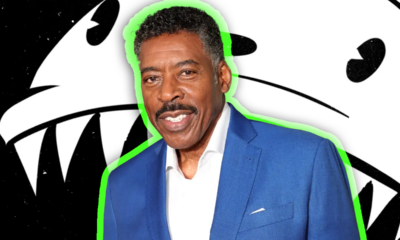
 Movies7 days ago
Movies7 days agoErnie Hudson To Star In ‘Oswald: Down The Rabbit Hole’
-
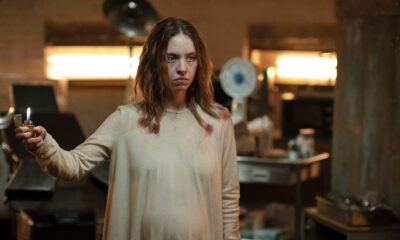
 Movies3 days ago
Movies3 days agoWatch ‘Immaculate’ At Home Right Now
-

 News4 days ago
News4 days agoRead Reviews For ‘Abigail’ The Latest From Radio Silence
-

 News2 days ago
News2 days agoHome Depot’s 12-Foot Skeleton Returns with a New Friend, Plus New Life-Size Prop from Spirit Halloween
-

 News4 days ago
News4 days agoMelissa Barrera Says Her ‘Scream’ Contract Never Included a Third Movie
-
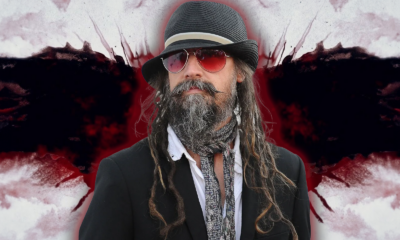
 Editorial5 days ago
Editorial5 days agoRob Zombie’s Directorial Debut Was Almost ‘The Crow 3’
-
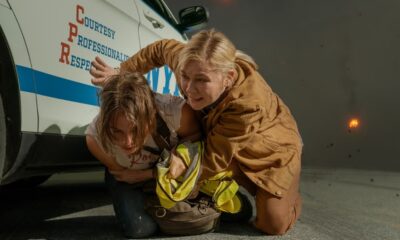
 News3 days ago
News3 days agoA24 Joins Blockbuster Movie Club With Their Biggest Opening Ever
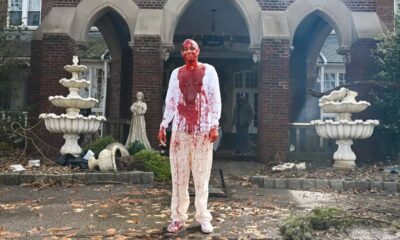


























You must be logged in to post a comment Login